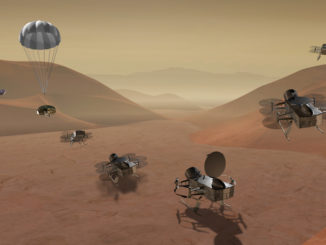
See ringed planet Saturn at its best in July 2019
Observers in Western Europe with a clear sky around local midnight cannot fail to notice the conspicuous ‘star’ that is Jupiter low in the south. But look a span-and-a-half of an outstretched hand at arm’s length to Jupiter’s left and you’ll find another giant of the solar system – Saturn. The ringed planet is closest to Earth for 2019 on 9 July, so here is our quick observing guide.









